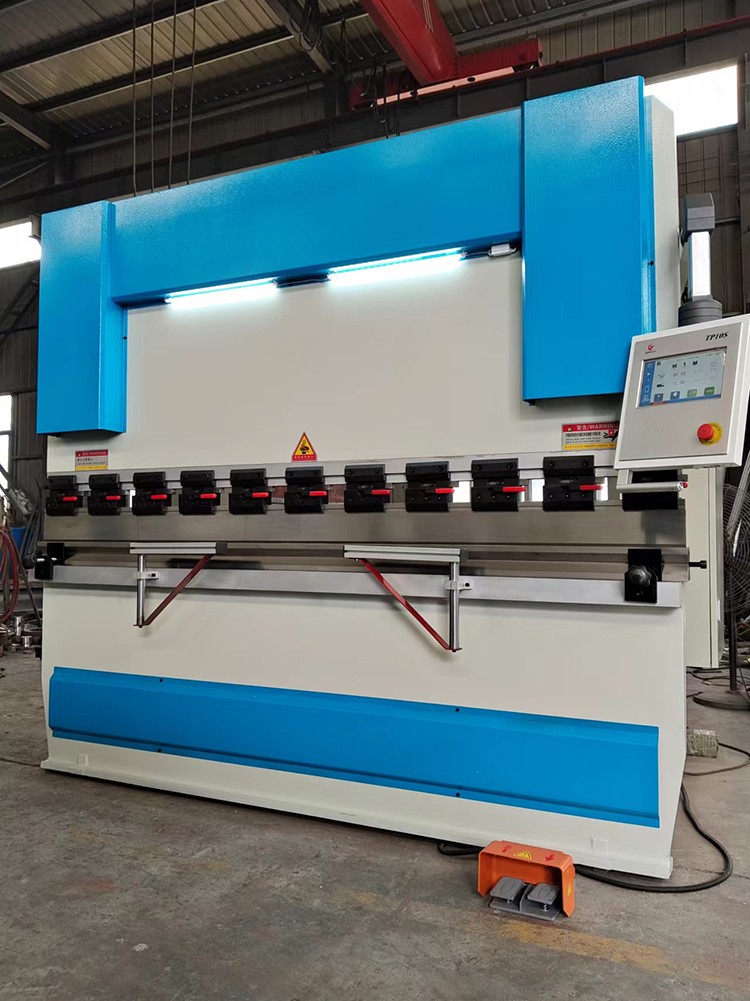

We are a professional manufacturer of bending machines with over 10 years of industry experience. Today, we would like to present to you a practical guide for bending machine novices to quickly master the operation:

Bending machines are commonly used in sheet metal processing equipment, the correct operation can ensure both processing quality and safety. For novice operators, it is important to know the basic operation procedures, precautions and common problems. This guide will provide practical guidance from the four aspects of equipment awareness, operating procedures, safety norms and common problems to help operators get started quickly.
1, Equipment awareness: understand the basic structure of the bending machine
The bending machine is mainly composed of frame, worktable, slide, mold and control system. The frame provides support, the table is used to fix the lower mold, and the slider drives the upper mold to complete the bending action. The molds are divided into upper and lower molds, different shapes of molds can be processed at different angles of the workpiece. The control system usually includes manual, semi-automatic and automatic modes, and novices are recommended to start practicing from the manual mode.
Before operation, you need to check the status of the equipment to ensure that there is no leakage in the hydraulic system, no loosening of the fasteners, and that the mold is firmly installed. At the same time, familiarize yourself with the functions of the buttons on the control panel, such as slider lift, pressure adjustment, stroke control, etc.
2, Step-by-step: from preparation to completion of bending
Selection of molds
Select the appropriate upper and lower molds according to the material thickness and bending angle. The width of the mold should be slightly larger than the length of the bending line of the workpiece to avoid uneven force resulting in deformation.
Adjustment parameters
Stroke adjustment: Set the downward distance of the slider through the control panel to ensure that the bending depth meets the requirements.
Pressure adjustment: Adjust the pressure according to the hardness and thickness of the material to avoid cracking of the plate due to too much pressure or insufficient angle due to too little pressure.
Backstop positioning: set the position of backstop to control the bending line distance and ensure the bending precision.
Test Folding and Calibration
Before formal processing, test fold with scrap to check whether the angle and size meet the requirements. If deviation occurs, fine-tune the pressure or mold position.
Formal bending
Place the sheet on the working table, close to the backstop, and press both hands on both sides of the workpiece (make sure your fingers are away from the mold). Step on the foot switch or press the operation button, the slider downward to complete the bending.
Remove the workpiece
After bending is completed, return the slide to its position and carefully remove the workpiece after confirming that it is not deformed or warped.
3, Safety Practices: Avoiding Operational Risks
Personal protection
Protective gloves and goggles must be worn to avoid scratches on the edges of the sheet or splashes of metal shavings.
Operation Taboos
(1)It is prohibited to adjust the mold or reach into the processing area while the ram is running.
(2)It is prohibited to use the equipment with overload to avoid overload damage to the hydraulic system.
(3)Unified instructions are required when more than one person is working together to avoid misoperation.
If abnormal noise, unstable oil pressure or loose molds are found, immediately press the emergency stop button and stop the machine for inspection.
4, Common problems and solutions
Inaccurate bending angle
Possible causes: improper selection of mold, insufficient pressure or rear stopper positioning bias.
Solution: Replace the appropriate mold, increase the pressure or recalibrate the stopper position.
Indentation on the surface of the workpiece
Possible causes: Impurities on the surface of the mold or the plate is not clean.
Solution: Clean the mold and plate, replace the mold if necessary.
Slider can not return to the position
Possible causes: Hydraulic system failure or travel switch malfunction.
Solution: Check the oil circuit and electrical circuit, contact maintenance personnel to deal with it.
Bending machine operation requires a combination of theory and practice. Beginners should observe and practice more, and gradually familiarize themselves with the characteristics of the equipment. Record the parameters and problems after each operation, accumulate experience can significantly improve the efficiency and quality. In case of complex processing needs, it is recommended to be guided by experienced personnel.
If you are interested in bending machine, please contact us.
 Address:Room 1202, Detaitang Building, No. 118 Huaguang Road, Zhangdian District, Zibo, Shandong
Address:Room 1202, Detaitang Building, No. 118 Huaguang Road, Zhangdian District, Zibo, Shandong WhatsApp:+8615653328535
WhatsApp:+8615653328535 Wechat: +8615965331535
Wechat: +8615965331535  E-mail:zs@sdsmachinery.com
E-mail:zs@sdsmachinery.com